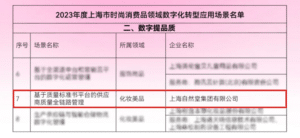The superposition of inflation and financial risks makes it more difficult for the U.S. economy to make a soft landing

[ad_1]
On March 22 local time, the Federal Reserve announced that it would raise the target range of the federal funds rate by 25 basis points to between 4.75% and 5%, raising the interest rate to the highest level since September 2007. But at the same time, the Fed played down the prospect of raising interest rates in its wording, highlighting the change in policy stance. Economists believe that the dual challenges of systemic risks in the banking industry and inflationary pressures have put the Fed in a dilemma, and further prudent adjustments to monetary policy may be required in the future to maintain financial stability and prevent a hard landing for the economy.
Continue to raise interest rates slightly by 25 basis points
On the 22nd, after the two-day monetary policy meeting, the Federal Reserve issued a statement saying that recent indicators showed moderate growth in spending and production, accelerated employment growth, but inflation remained high. In order to support maximum employment and the long-term inflation target of 2%, the Federal Reserve decided to raise the target range of the federal funds rate to between 4.75% and 5%.
However, the Fed also said that recent developments could lead to tighter credit conditions for households and businesses and weigh on economic activity, employment and inflation. The Fed is not yet sure about the magnitude of these effects. In the future, the Federal Reserve will still pay close attention to inflation risks and firmly commit to returning the inflation rate to the 2% target. The Fed will be prepared to adjust the stance of monetary policy appropriately if risks arise that could impede the achievement of its goals.
According to the Fed’s forecast, the US inflation rate rose to 3.3% this year, and the core inflation rate after excluding food and energy prices was 3.6%, well above the 2% inflation target. Inflation is expected to slow to 2.5% next year.
The Fed raised interest rates this time in line with the previous one. In early February, the Federal Reserve announced a 25 basis point rate hike, the smallest rate hike in a year. Since entering the current round of interest rate hike cycle in March last year, the Federal Reserve has raised interest rates nine times in a row, four of which have raised interest rates by as much as 75 basis points, and the cumulative rate increase has reached 475 basis points.
It is worth noting that the current policy stance of the Federal Reserve has changed significantly compared with the past, and it has given up relevant expressions suggesting that it will continue to raise interest rates. The Fed said in a statement that it would closely monitor new information and assess its implications for monetary policy, anticipating that “some additional policy tightening may be appropriate.” This phrase is weaker than the “sustained rate hikes” used in its past statements.
In the latest economic outlook released by the Federal Reserve on the 22nd, most members of the Federal Open Market Committee believe that the federal funds rate may be higher than 5% this year. Among them, 10 members expect interest rates to rise to between 5% and 5.25% this year. This also means that the Fed may raise interest rates only once this year. Most members expect the Fed to cut rates in 2024. Fourteen members expect interest rates to be lower than 4.75% next year.
Dilemma of anti-inflation and financial stability
Recently, the Fed’s movements have attracted much attention. Although this interest rate decision is in line with mainstream expectations and shows the Fed’s determination to fight inflation, it also intensifies the market’s concerns about the recent risk trend of the banking industry and the stability of the financial system. The banking crisis may continue to ferment in the short term.
In the middle of this month, three U.S. banks, Silvergate Bank, Silicon Valley Bank and Signature Bank, closed their doors in just five days. Negative effects continued to spill over, triggering turmoil in the U.S. and international financial systems. Economists generally believe that the Federal Reserve’s aggressive interest rate hikes are one of the main reasons for the serious risks in the US banking system.
U.S. Treasury Secretary Janet Yellen previously stated that the fundamental problem of the successive closures of banks is that the Federal Reserve continues to raise interest rates. High interest rates have caused the market prices of financial assets such as bonds held by banks to continue to fall, which in turn led to their insolvency. A study jointly conducted by economists from several universities in the United States also showed that due to the previous aggressive interest rate hikes by the Federal Reserve, at least 186 banks in the United States are facing a situation similar to that of Silicon Valley Bank, posing serious risks to the US banking system.
While the financial system is struggling, U.S. inflation remains high. According to data released by the US Department of Labor on the 14th, the US consumer price index (CPI) rose by 6% year-on-year in February this year.
For more than a year, the Federal Reserve has made stable prices a priority of monetary policy, and this policy statement also shows this. Federal Reserve Chairman Jerome Powell said at a press conference after the meeting on the 22nd that Fed officials had considered suspending interest rate hikes after the successive bank failures. But the consensus among officials to keep raising rates is stronger now that data show “inflationary pressures continue to move higher.”
The Associated Press reported that the Fed’s decision was difficult because it had to weigh whether to continue raising interest rates to reduce inflation, or to slow down rate hikes to ease the pressure on the banking industry and prevent it from dragging down the rest of the economy.
The bigger question is what the Fed will do next. Economists pointed out that continuing to raise interest rates may exacerbate bank run panic and lead to a continuation of the banking crisis, but suspending interest rate hikes may weaken efforts to fight inflation, continue high prices, and erode household budgets. Under the dual economic challenges of high inflation and turmoil in the banking industry, the Fed’s subsequent decision-making is expected to be in a dilemma.
A soft landing for the U.S. economy is becoming more difficult
In the context of the spreading turmoil in the banking industry, worries about a US economic slowdown and recession expectations are heating up again. Analysts believe that the negative effects of aggressive interest rate hikes are gradually emerging, which will further drag down the US economy and financial stability, and the difficulty of a soft landing of the economy is still increasing.
Reuters pointed out that the Fed’s aggressive anti-inflation behavior has already made the market worry that the US economy may fall into recession, and the recent banking turmoil has exacerbated this concern. The Associated Press article also stated that the current U.S. banking system is under tremendous pressure, especially small and medium-sized banks that are at the center of investors’ attention. Banks are lending less to businesses, which in turn could mean less hiring and less economic activity, further raising recession risks that many economists see as already high.
Some analysts believe that the U.S. economic growth is marginally slowing down, there is little room for a soft landing, consumption resilience will weaken the economic support, inflation and unemployment are not optimistic, and the economic recession may be inevitable, and a shallow recession is expected to occur this year.
According to the economic outlook released by the Federal Reserve on the 22nd, the U.S. economy will grow by 0.4% and 1.2% this year and next, respectively, down 0.1 and 0.4 percentage points from the December forecast last year. The Federal Reserve expects the U.S. unemployment rate to be 4.5 percent this year, down 0.1 percentage point from its previous forecast, and the unemployment rate will rise to 4.6 percent next year.
In order to alleviate the banking crisis and maintain economic and financial stability, the U.S. regulators are actively taking action to rescue the market.
U.S. Treasury Secretary Yellen said on the 21st that the successive closures of Silicon Valley Bank and Signature Bank have triggered contagious runs in the U.S. banking industry, and the federal government may take measures to protect small financial institutions if necessary.
Analysts pointed out that the measures taken by the U.S. authorities have boosted market confidence to a certain extent and greatly reduced the probability of a large-scale financial crisis. However, in the future, the U.S. still needs to be vigilant against the deflation caused by the tightening of bank credit, which will slow down the economy and prevent the economy from hard landing. .
[ad_2]
Source link







